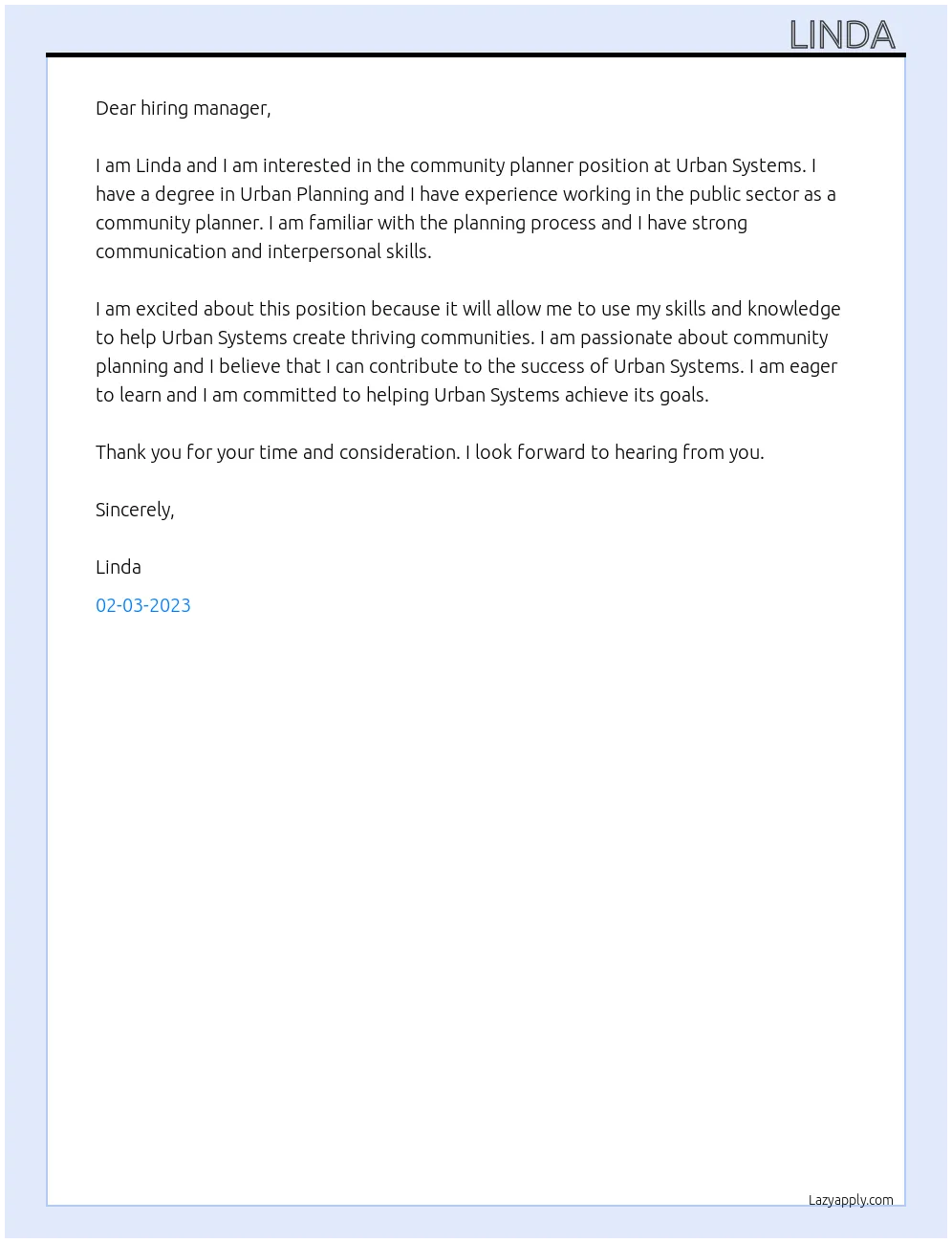Crafting Your Urban Planner Cover Letter
A well-crafted cover letter is your initial introduction to a potential employer in the competitive arena of urban planning. It’s your chance to showcase not just your qualifications and competencies but also your enthusiasm for the position and the organization itself. This guide offers a complete walkthrough of how to write a cover letter that grabs the attention of the reader, demonstrates your value, and significantly increases the probability of you being offered an interview. The goal is to make your cover letter shine from the crowd, showcasing your unique strengths while targeting your message to align with the hiring manager. Remember, each cover letter should be tailored to the specific job and company to maximize its impact.
Understanding the Purpose of a Cover Letter
The fundamental role of a cover letter is to present yourself to the potential employer while providing the context to accompany your resume. It’s not a mere repetition of your resume; instead, it’s the perfect opportunity to narrate your professional story, explain why you’re the ideal candidate for the position, and spotlight those specific skills and experiences that directly relate to the job description. Envision it as your personalized sales pitch, where you’re highlighting your talents and creating a compelling case as to why you should be considered for the role. Furthermore, a well-written cover letter proves your communication capabilities, attention to detail, and awareness of the company’s mission and values. This is the initial impression the employer receives about your personality and approach to professionalism.
Highlighting Your Urban Planning Skills
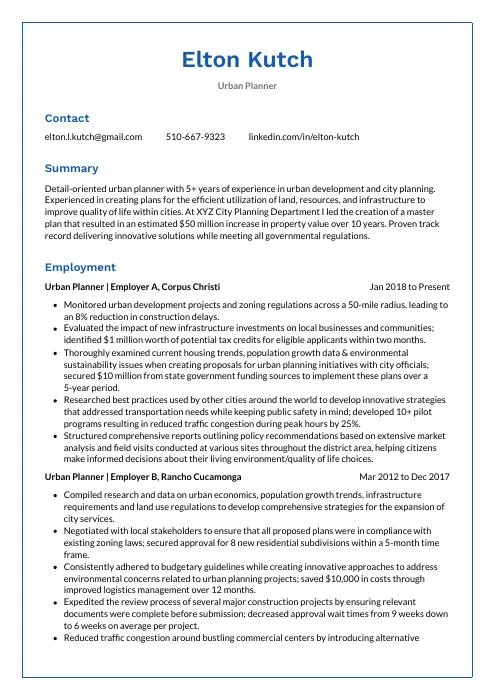
In your cover letter, it’s crucial to emphasize those skills directly relevant to the field of urban planning. These include analytical skills such as data analysis and spatial reasoning, as well as design capabilities, if your planning expertise involves design. Showcase your knowledge of planning principles, zoning regulations, and land use policies. Project management skills, coupled with effective communication and public speaking abilities, are highly valued. If you are proficient in using GIS software, CAD, or any other relevant technologies, make sure to mention them. Demonstrate how your abilities match the job’s needs by providing examples from your past experiences, illustrating how you’ve effectively utilized these skills in a professional setting. Highlighting your skills makes you stand out from the rest.
Researching the Employer and Position
Performing thorough research is a crucial step before you start drafting your cover letter. Begin by carefully reviewing the job description, paying close attention to the key requirements and the company’s values. Next, conduct research on the employer, making sure to understand their mission, recent projects, and any specific challenges they are currently facing. Visit their website, browse their social media profiles, and read any relevant news articles. This research enables you to customize your cover letter to the unique requirements of the employer. The more you learn about the organization and the specific role, the better you can demonstrate your genuine interest. Showing this will inform the employer that you’ve gone the extra mile to understand their needs and can effectively contribute to their goals.
Formatting Your Urban Planner Cover Letter
Proper formatting is essential to create a professional and readable cover letter. Opt for a standard and easy-to-read font such as Times New Roman, Arial, or Calibri, with a font size ranging between 10 and 12 points. Maintain uniform margins of one inch on all sides of the document. The letter should be single-spaced within the paragraphs and double-spaced between each paragraph. Make sure your letter is no longer than one page, as recruiters often have limited time to review applications. The format must include a header with your contact information, a salutation, a body that includes opening, middle, and closing paragraphs, and a professional closing. A well-formatted letter enhances its visual appeal and makes the content easy to follow and digest.
Header and Contact Information
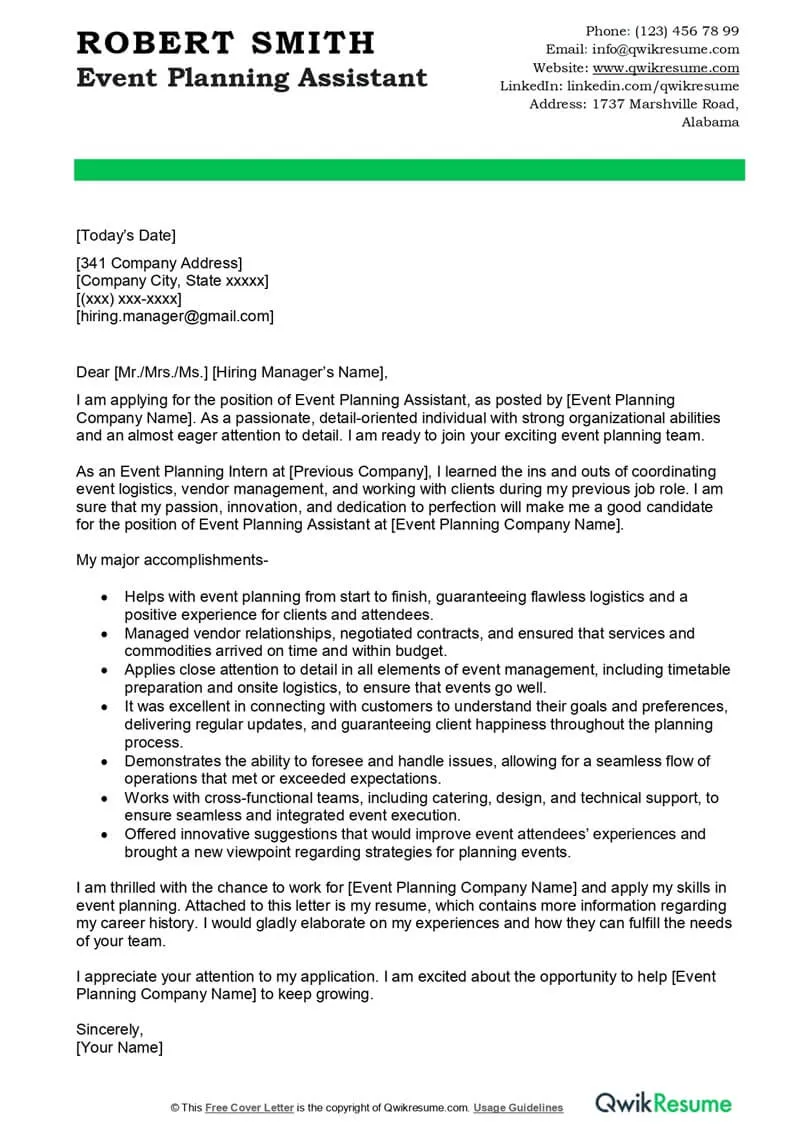
Your header should include your complete name, address, phone number, and a professional email address. Place this information at the top left or right corner of your page. Double-check to ensure your contact details are accurate and up-to-date. Consider including the URL to your LinkedIn profile or professional website, if you have one. Ensure that your email address conveys a professional tone and is ideally based on your name and last name. This shows attention to detail and helps the employer contact you swiftly. The purpose of the header is to ensure that the recruiter or hiring manager can reach you without any difficulty.
The Salutation
Always use a formal salutation such as “Dear Mr./Ms./Mx. [Last Name],” if you have the hiring manager’s name. Make sure to research the name of the person reviewing your cover letter to confirm their correct title and spelling. If you don’t know the hiring manager’s name, you can use a more general greeting like “Dear Hiring Manager.” Avoid casual greetings like “Hi” or “Hello.” The salutation sets the tone for your letter, so it should be polite and professional. Addressing the recipient by their correct name shows respect and that you’ve taken the time to do your research.
The Body of Your Cover Letter
The body of your cover letter is where you’ll highlight your qualifications, skills, and enthusiasm for the specific position. This section should be organized into three key parts: an opening paragraph, a body paragraph(s) that emphasizes your relevant experiences and skills, and a closing paragraph. Each paragraph should serve a specific purpose, constructing a coherent narrative that proves you are the ideal candidate. Ensure your writing is clear, concise, and engaging, making it simple for the reader to understand your main qualifications and your interest in the job. Structure your letter with impactful language, avoiding jargon or highly technical terms.
Opening Paragraph Grab Attention
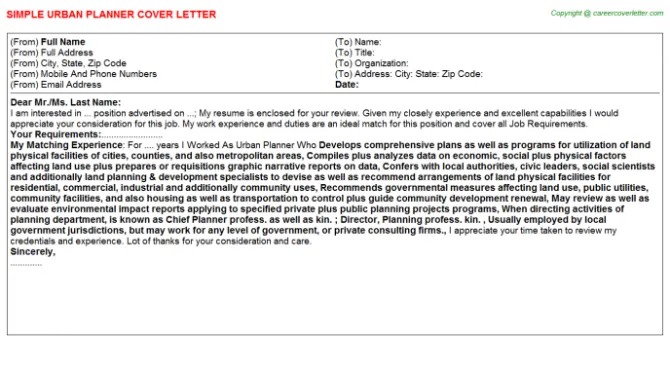
The opening paragraph should immediately grab the reader’s attention. Start by specifying the position you’re applying for and where you saw the job listing. Briefly mention why you’re excited about the opportunity. Think about using a powerful statement that emphasizes your key strengths or a specific accomplishment linked to the job’s requirements. This opening sets the tone for your cover letter and encourages the reader to continue reading. A compelling opening paragraph is critical for making a good first impression and making sure your cover letter gets noticed. This is the initial hook, which sets the stage for the rest of your application.
Highlighting Relevant Experience
In the body paragraphs, showcase your relevant experience. Instead of simply listing your responsibilities, focus on specific achievements and how you contributed to previous projects or roles. Use the STAR method (Situation, Task, Action, Result) to illustrate your skills through real examples. Explain the situation, the task you were assigned, the actions you took, and the positive outcomes you achieved. Quantify your accomplishments whenever possible by using data and metrics, for instance, “Increased project efficiency by 15%” or “Managed a budget of $X million.” Customize your examples to align with the specific requirements outlined in the job description, proving you possess the necessary skills and experiences the employer is seeking.
Showcasing Your Skills and Achievements
Clearly state your relevant skills and provide examples of how you’ve used them. Include both hard skills, such as proficiency in GIS software, data analysis, or urban design, and soft skills, like project management, communication, and problem-solving. Highlight your most significant achievements, such as successful project outcomes, awards, or any other recognition. When you describe your accomplishments, use action verbs to make your achievements more impactful. For instance, instead of saying “Was responsible for project management,” use “Led project teams to successful completion, resulting in…” Connecting your skills and achievements to the job’s requirements will showcase your value and your suitability for the role.
Demonstrating Your Passion for Urban Planning
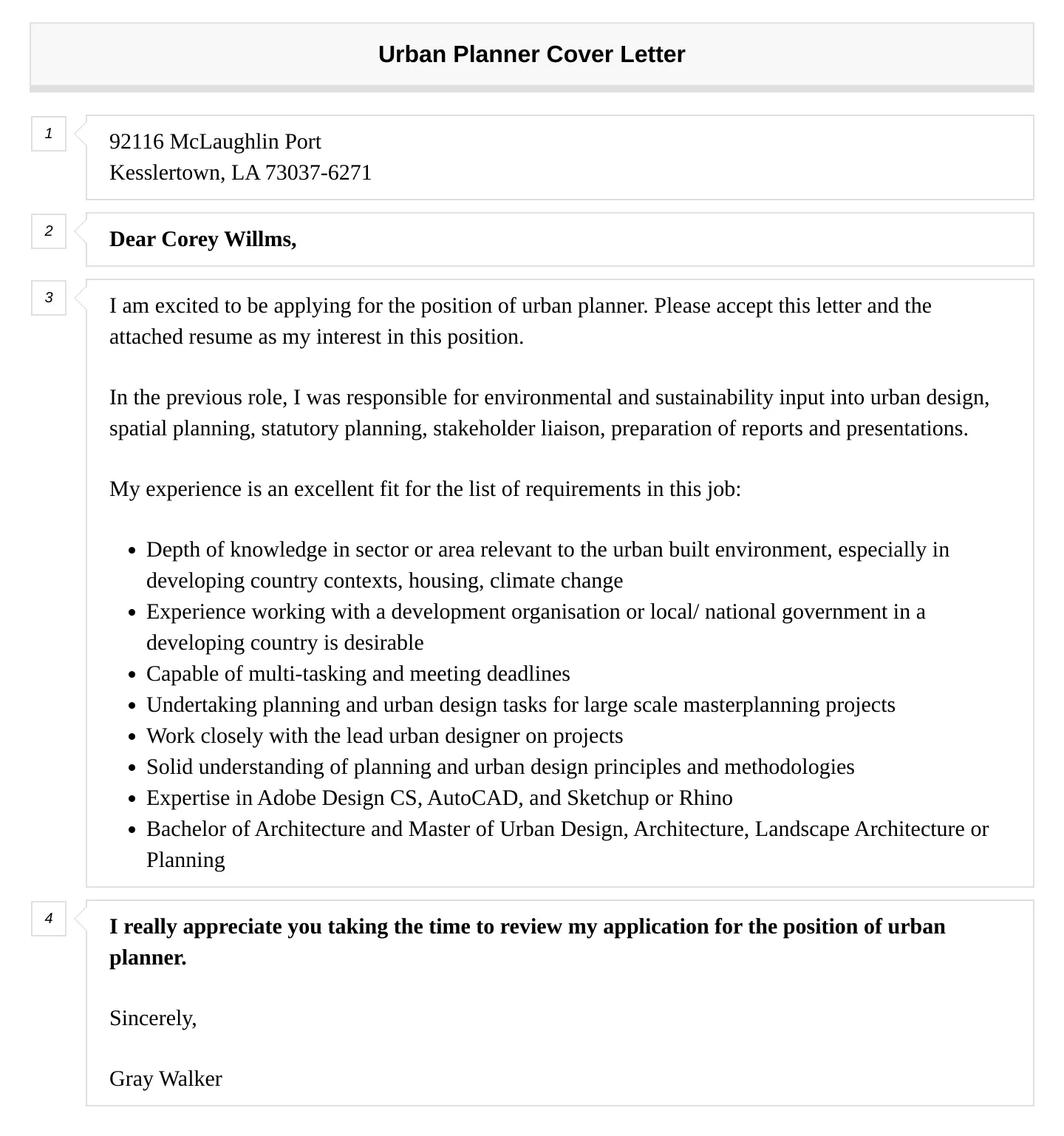
Express your genuine passion for urban planning and clarify why you are interested in the specific organization. Share your vision for the future and how you can contribute to their goals. Discuss any experiences, projects, or academic work that show your enthusiasm for the field. Show that you understand the challenges and opportunities within urban planning and are eager to make a positive impact. Conveying your passion is critical because it demonstrates your dedication, willingness to learn, and commitment to the organization. Your enthusiasm can differentiate you from other candidates who may possess similar qualifications.
Closing Paragraph and Call to Action
The closing paragraph should summarize your main points and reiterate your interest in the position. Express your enthusiasm for the opportunity and explain how you believe you can contribute to the company’s success. Include a clear call to action, like asking for an interview or suggesting a follow-up conversation. Thank the employer for their time and consideration. A strong closing paragraph leaves a lasting impression and motivates the employer to move to the next step in the hiring process. Reiterate your value and facilitate easy contact for the employer.
Expressing Gratitude and Encouraging Contact
Always express your gratitude for the employer’s time and consideration in the closing paragraph. Reiterate your interest in the position and your excitement about the chance to further discuss your qualifications. Include a call to action by stating your availability for an interview at their convenience. Provide your contact information once again to ensure that they can easily contact you. Using a phrase like, “I am keen to discuss my qualifications in more detail during an interview,” or “Thank you for considering my application. I look forward to hearing from you,” shows professionalism and encourages the employer to take action.
Proofreading and Editing Your Cover Letter
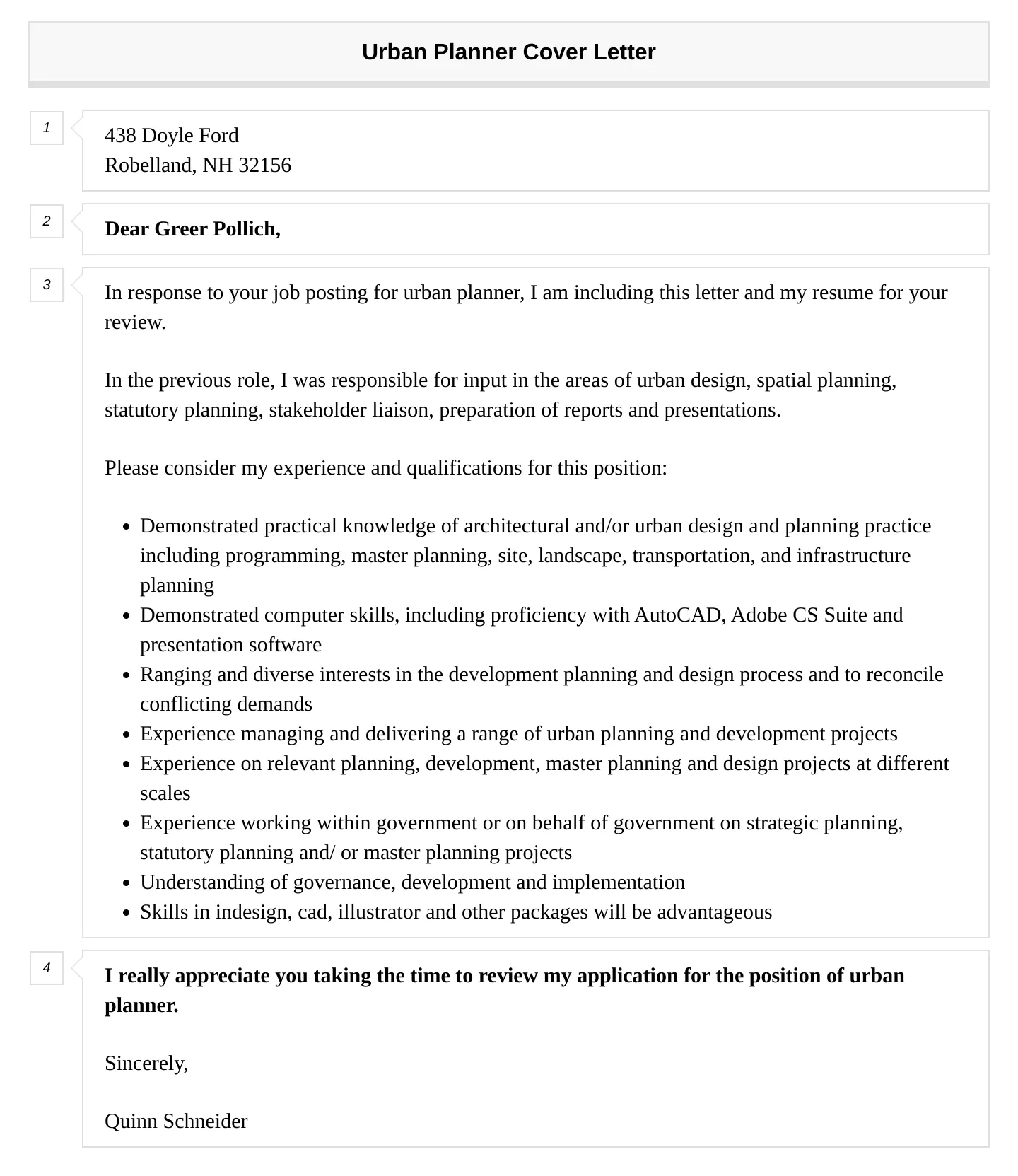
Thorough proofreading and editing are essential steps to make sure your cover letter is error-free and professional. Check for errors in grammar, spelling, punctuation, and formatting. Read your letter aloud to catch any awkward phrasing or run-on sentences. Ask a friend, family member, or career advisor to review your cover letter for errors or areas where it can be improved. Proofreading is critical because even minor errors can create a negative impression. A polished cover letter shows that you pay attention to detail and respect the employer’s time. This ensures that your letter correctly presents your capabilities and helps you become a candidate for the job.
Common Mistakes to Avoid
Avoid making these common mistakes: writing generic cover letters, having typos and grammatical errors, and not tailoring the letter to a specific job. Don’t simply repeat what’s in your resume; instead, provide additional context. Also, avoid using jargon that the reader might not understand, negative language, or complaining about previous employers. Keep your cover letter focused and avoid including irrelevant information. Always be truthful and never exaggerate your skills or experiences. Making these mistakes can lead to your application being immediately rejected, but avoiding them allows you to present yourself in the best light.
Using Action Verbs
Use action verbs to make your achievements and skills more impactful. Instead of passive language like “Was responsible for,” use active verbs such as “Managed,” “Led,” “Implemented,” or “Developed.” Action verbs demonstrate that you’re proactive and results-oriented. They inject energy and clarity into your writing, which makes your accomplishments more vivid and compelling. A strong action verb list should include words like “created”, “designed”, “coordinated”, “analyzed”, “researched”, “planned”, “executed”, and “achieved.” This helps the reader visualize your capabilities and understand how you’ve contributed in your previous roles. Make every word count.
Tailoring Your Cover Letter
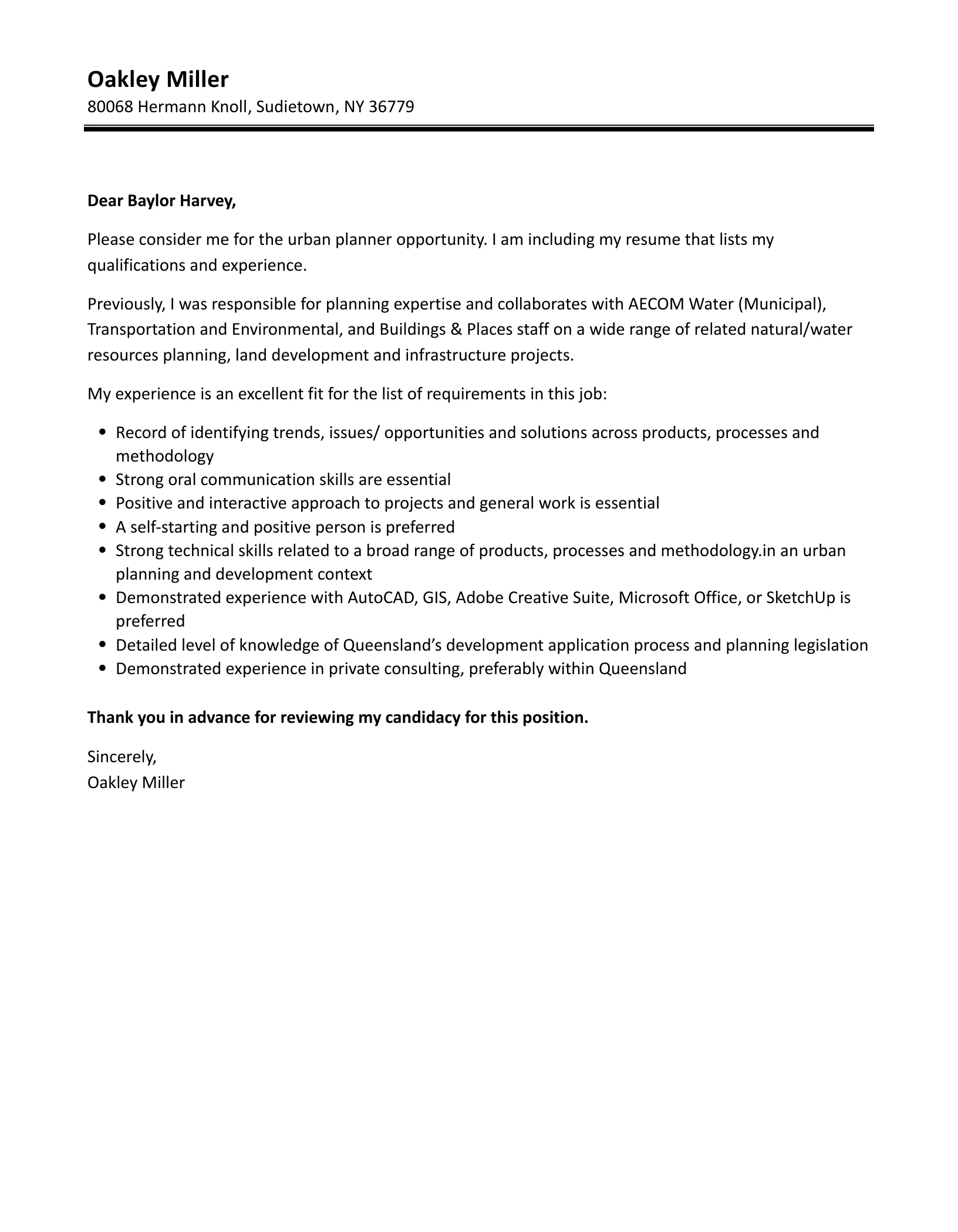
Customize your cover letter for each job application. Do not use the same generic cover letter for multiple positions. Customize your letter to align with the specific requirements outlined in the job description and also with the values of the company. Research the organization and use your knowledge to highlight the relevant skills and experiences. Mention specific projects or initiatives of the organization, and explain how your skills can contribute to them. This shows the employer that you have taken the time to understand their needs and that you are genuinely interested in the position. Customizing your letter demonstrates that you pay attention to detail, which increases the likelihood of your application being selected.
Adding a Personalized Touch
Adding a personalized touch can make your cover letter stand out from the rest. Mention something specific that you admire about the company or the role. If you have a personal connection to the organization, such as meeting an employee or attending an event, include this briefly. Show your personality through a friendly tone and by highlighting your enthusiasm. Personalization indicates that you are more than just another applicant; you’re a real person with specific interests and goals. It can allow the hiring manager to connect with you on a more personal level. This also creates a more memorable experience.
Example Cover Letter for Urban Planner
Here’s a sample cover letter to use as a template. Remember to replace the bracketed information with your own details and tailor it to the specific job: [Your Name] [Your Address] [Your Phone Number] [Your Email] [Date] [Hiring Manager Name] (If known, otherwise use title) [Hiring Manager Title] [Company Name] [Company Address] Dear [Mr./Ms./Mx. Last Name], I am writing to express my keen interest in the Urban Planner position at [Company Name], as advertised on [Platform]. With a [Number] years of experience in urban planning and a proven track record of [mention a key accomplishment], I am confident I can significantly contribute to your team. In my previous role at [Previous Company], I successfully [mention a key project or achievement]. This experience has equipped me with the skills to manage complex projects, analyze data, and collaborate with diverse stakeholders. I am particularly drawn to [Company Name]’s commitment to [mention something specific about the company]. My goal is to help build sustainable and vibrant communities. Thank you for considering my application. I look forward to the opportunity to discuss my qualifications further. Sincerely, [Your Name].
